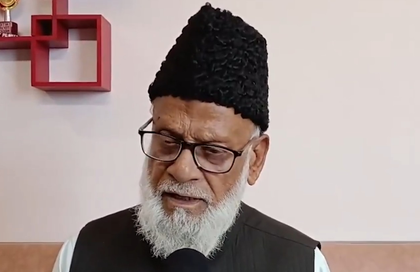NCERT textbook changes spark debate: Muslim clerics cry foul, Sikh cleric welcomes move
By IANS | Updated: July 16, 2025 16:59 IST2025-07-16T16:53:50+5:302025-07-16T16:59:15+5:30
New Delhi, July 16 The recent revisions in the Class 8 Social Science textbook by the National Council ...

NCERT textbook changes spark debate: Muslim clerics cry foul, Sikh cleric welcomes move
New Delhi, July 16 The recent revisions in the Class 8 Social Science textbook by the National Council of Educational Research and Training (NCERT) have sparked sharp reactions from different religious quarters.
While several Muslim clerics have criticised the changes, alleging distortion of historical facts, a prominent Sikh cleric has welcomed the move, saying it reflects historical truths long overlooked.
The updated textbook, titled 'Reshaping India's Political Map', covers the Delhi Sultanate, Vijayanagara Empire, Mughals, and the rise of Sikh power from the 13th to 17th centuries.
It introduces topics such as political unrest, military conquests, destruction of educational institutions, and temple desecrations -- areas largely absent in previous editions. It also highlights several instances of religious intolerance during the Sultanate and Mughal rule.
Reacting strongly to the changes, Mohammad Suleman, founding member of the All India Muslim Personal Law Board (AIMPLB), told IANS, "Those in power, regardless of organisation or ideology, are distorting history. It is well known and no secret. A country or society can only progress when history is viewed in its true context. Unfortunately, in our democratic setup, it is disheartening that those in power are rewriting history with distortions."
"These people are also destroying the top Indian History Congress. They are not helping the country but only making a loss for it. They can fool a few people in the country, but not all. When history is studied around the world, it is noted that Aurangzeb was a Mughal ruler of India, even though he reigned by the means of the sword. They have also distorted facts related to Babur. Babur was called by Rana Sangha, an Indian ruler. Whether he was cruel or not, people can read for themselves in several history books," he added.
Maulana Nisar Ahmad Misbahi, a cleric from Unnao, also criticised the textbook updates, calling them "forced defamation."
"When someone's history is presented or taught to the new generation through books, it should reflect the truth. There should be no forced glorification or defamation of anyone's image. It does not send a good message and further worsens the atmosphere. History should be presented as it actually was," he added.
However, the changes have received support from the Sikh community. Jagdip Singh Kahlon, General Secretary of the Delhi Sikh Gurdwara Management Committee (DSGMC), backed NCERT's decision.
Speaking to IANS, he said, "This is the right decision. The truth is that when the Mughals ruled India, they crossed all limits of cruelty. They martyred Guru Arjan Dev Badshah Ji, Guru Tegh Bahadur Sahib Ji, Guru Gobind Singh Sahib Ji's younger brother, and even the elder one was also martyred. So this is a very big story of cruelty."
"I believe that when the country got independence, even before that, during British rule, and later when the Congress party came to power, they showed a completely different face of the Mughals. They named all the roads and big educational institutions after them," he said.
"It was a matter of shame for this country that the rulers who martyred our Gurus, who demolished temples and built mosques here, were given so much respect in history. So this truth should have come to the fore. The truth should be known to our youth and children about the atrocities committed by the Mughals here. So, if they make changes in the syllabus and try to bring out the truth, then I would definitely welcome it," Khalon added.
One of the new inclusions in the textbook mentions Alauddin Khilji's trusted general Malik Kafur, who "attacked a number of Hindu centres such as Srirangam, Madurai, Chidambaram, and possibly Rameswaram."
The book also states that the Delhi Sultanate's rule saw "numerous attacks on sacred or revered images in Buddhist, Jain and Hindu temples; such destruction was motivated not just by plunder but also by iconoclasm."
Disclaimer: This post has been auto-published from an agency feed without any modifications to the text and has not been reviewed by an editor
Open in app